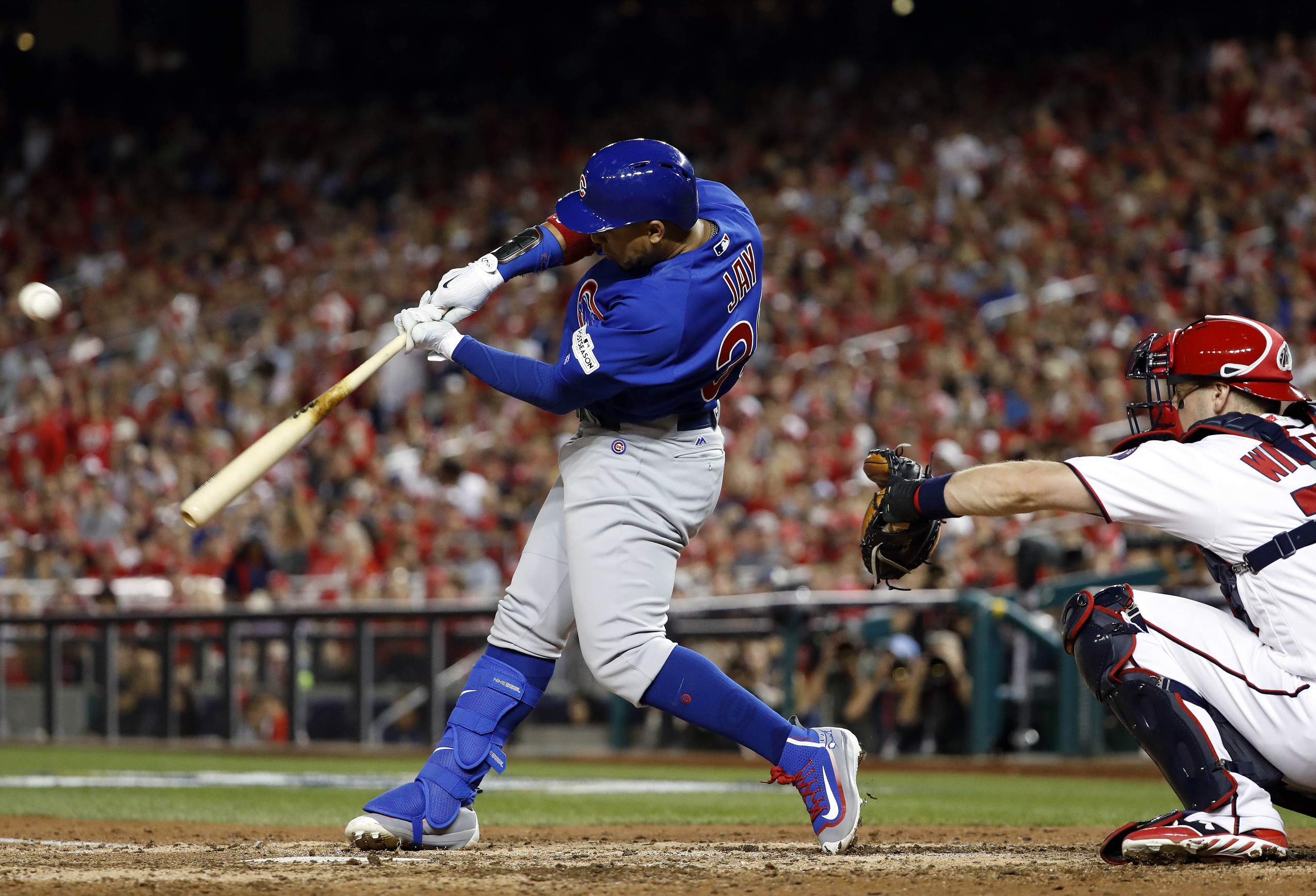Even though Jon Jay came to the Chicago Cubs from the San Diego Padres, it was his time with the St. Louis Cardinals that defined his talents to Cubs fans—the pesky fourth outfielder who seemed as likely to rip your heart out with a clutch line drive as an in-his-prime Albert Pujols was to hit a soul-crushing home run into the Wrigley bleachers. That was the player Cubs fans wanted. And by most measurements, that’s the player Cubs fans got.
Jay isn’t an All-Star, and probably never will be now eight years into his career. He doesn’t hit for power (33 home runs in 3082 at-bats), doesn’t walk much (6.9% career walk rate), and even when he’s grading out positively, he still ends up around a 1.5 WARP player because of some sub-par grades on defense—as detailed by our own Kenny Kelly here. In 2017, Jay became exactly what manager Joe Maddon said he was: “An acquired taste.”
His .296/.374/.375 line speaks to an offensively productive player, even if the slugging leaves something to be desired. But when it’s supplemented with a .368 BABIP, an approach to all fields, and a 31.58 percent line drive rate, Jay can be more productive than your traditional fourth or fifth outfielder. Whether the Cubs decide to bring him back is not really the issue; it’s that his production was significant enough to warrant the question as to how they’ll replace it if they don’t.
Though Jay was one of (approximately) 746 outfielders on the Cubs roster last season, he managed to finagle his acquired-taste status into 433 plate appearances. That was good for seventh on the team. Other than the month of May that saw the entire Cubs offense go on vacation for some reason, Jay provided consistent work at the plate by hitting over .300 in every other month but August –something to which very few 2017 Cubs hitters can lay claim.
The lack of defensive value isn’t something that’s readily apparent, either. Jay catches everything he gets to, which makes him feel like a more reliable fielder than many of the advanced metrics suggest. But eight years in, he is who he is. None of his numbers are shocking based on Jay’s career lines. Even something like his .368 BABIP appears mostly sustainable based on his history.
It’s unlikely the Cubs bring him back, however. He made $8 million last season, a figure he’ll most likely eclipse in 2018, either on a one, or multi-year deal. So, unless this bizarre offseason upends Jay’s marketability, his 2017 performance should price him out of the Cubs’ range for the role he would be asked to play. Sans a trade (or a rash of injuries), it’s hard to imagine the Cubs bringing in an outfielder who could expect to get anything close to the number of plate appearances Jay did last season.
Which could be a problem. And here’s why:
The loss of on-base percentage feels like a growing concern across the entire roster, as the Cubs begin to rely on more and more players with wavering OBPs: Javier Baez (.317), Addison Russell (.304), Ian Happ (.328), and Jason Heyward (.326). Add that to the loss of Dexter Fowler last season, a down year from Ben Zobrist (.318) that might be a sign of things to come, and unpredictability from Kyle Schwarber (.315), and you’re finding yourself further and further from one of the strengths that propelled the 2016 World Series team. Ideally, many of those players take steps forward in 2018, but there’s no guarantee that happens, and few of those players project to be elite on-base guys anyway. And if you notice, four of the players listed are four of the five players currently projected to get the most at-bats in the outfield next season –the other is Albert Almora, who, while not terrible, still only held an OBP of .338 last season. Jay’s .374 looks elite by comparison.
You’re not replacing a .374 OBP player who had 200 plate appearances; you’re replacing a .374 OBP player with more than double that number of plate appearances. With the outfield rotation all-but-solidified, the solution almost has to rely on improvement from the players listed above, which feels uneasy. Without a trade, there’s no room for a fifth outfielder who will get enough at-bats to make up for Jay’s loss (someone like Austin Jackson, or Jarrod Dyson). Because of that, a player with speed and defense like Dyson seems to make more sense here, even if the Cubs are having to make up the on-base elsewhere.
Unless the Miami Marlins want to send over Christian Yelich for a couple of single-A batboys. That’d work, too.
Lead photo courtesy Geoff Burke—USA Today Sports

No worries about replacing the OBP, so long as you replace the more-important SP instead. In Jay’s case, that is an absolute piece of cake. 3-R HR’s turn games; 3-R walks….oh, wait a sec…